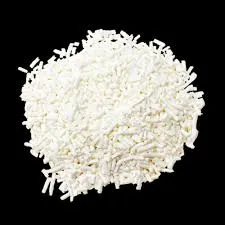
sulfur dioxide food additive
Understanding Sulfur Dioxide as a Food Additive
Sulfur dioxide (SO2) is a colorless gas with a pungent, suffocating odor, commonly recognized for its role in various industrial applications, including food preservation. It serves as a food additive and preservative, particularly in the wine and dried fruit industries. Its extensive use as a food additive has raised questions about safety, regulatory policies, and its impact on health.
Understanding Sulfur Dioxide as a Food Additive
Despite its effectiveness, the use of sulfur dioxide in food has led to health concerns. Some individuals are sensitive to sulfites, the salts formed from sulfur dioxide. These sensitivities can trigger allergic reactions, including asthma attacks, headaches, and skin rashes. The symptoms can be serious for some people, especially those with asthma or other respiratory conditions. As a result, regulatory agencies like the U.S. Food and Drug Administration (FDA) have established guidelines for the use of sulfur dioxide in food products. The FDA categorizes it as “Generally Recognized As Safe” (GRAS), but it mandates that food products containing sulfur dioxide must disclose its presence on the label to inform consumers who may be sensitive.
sulfur dioxide food additive

Different countries have varying regulations regarding the permissible levels of sulfur dioxide in food products. In the United States, the FDA allows sulfur dioxide to be used in certain applications, but the maximum allowable limits are strictly enforced. In the European Union, the regulations are similar, with specific limits on the concentration of sulfites in various foods and beverages. These regulations are designed to protect consumers while allowing food manufacturers to continue using sulfur dioxide as a preservation method.
In the wine industry, sulfur dioxide is widely employed during the winemaking process. It serves to protect against oxidation and microbial spoilage, enhancing the wine's stability and longevity. While many traditional winemakers prefer to use minimal sulfur to allow the wine's natural characteristics to shine, modern methods often involve using sulfur dioxide to ensure the wine remains palatable over time. The controversy surrounding its use in wine has led to a rise in organic and natural wines, which often avoid added sulfites, positioning themselves as a cleaner alternative for health-conscious consumers.
In conclusion, sulfur dioxide is a crucial food additive known for its preservative qualities, particularly in the dried fruit and wine industries. While effective in prolonging the shelf life and maintaining the appearance of food products, it is essential for consumers to be aware of potential sensitivities and the regulations governing its use. Understanding both the benefits and risks associated with sulfur dioxide as a food additive allows consumers to make informed choices regarding their diets. As the food industry continues to evolve, the dialogue about the use of such additives remains relevant, balancing food safety, preservation, and consumer health.
-
Understanding Synthetic Rubber OptionsNewsApr.27,2025
-
Trichloroisocyanuric Acid: Essential for Clean and Safe WaterNewsApr.27,2025
-
Sodium Dichloroisocyanurate: Key to Safe Water TreatmentNewsApr.27,2025
-
Sodium Acid Pyrophosphate: Essential in Modern Food ProcessingNewsApr.27,2025
-
Essential Water Treatment ChemicalsNewsApr.27,2025
-
Denatured Alcohol and Its Industrial UsesNewsApr.27,2025
-
The Versatile Uses of Sodium BicarbonateNewsApr.24,2025
Hebei Tenger Chemical Technology Co., Ltd. focuses on the chemical industry and is committed to the export service of chemical raw materials.
-

view more DiethanolisopropanolamineIn the ever-growing field of chemical solutions, diethanolisopropanolamine (DEIPA) stands out as a versatile and important compound. Due to its unique chemical structure and properties, DEIPA is of interest to various industries including construction, personal care, and agriculture. -

view more TriisopropanolamineTriisopropanolamine (TIPA) alkanol amine substance, is a kind of alcohol amine compound with amino and alcohol hydroxyl, and because of its molecules contains both amino and hydroxyl. -

view more Tetramethyl Thiuram DisulfideTetramethyl thiuram disulfide, also known as TMTD, is a white to light-yellow powder with a distinct sulfur-like odor. It is soluble in organic solvents such as benzene, acetone, and ethyl acetate, making it highly versatile for use in different formulations. TMTD is known for its excellent vulcanization acceleration properties, which makes it a key ingredient in the production of rubber products. Additionally, it acts as an effective fungicide and bactericide, making it valuable in agricultural applications. Its high purity and stability ensure consistent performance, making it a preferred choice for manufacturers across various industries.











